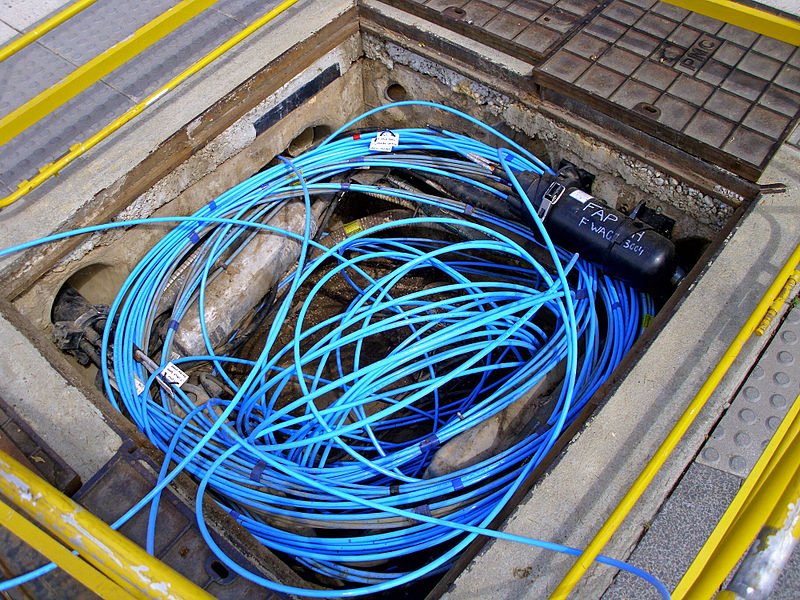Introduction
What is FTTx?
FTTx stands for “Fiber to the X,” where “X” represents various endpoints in the network. It encompasses different broadband network designs that incorporate fiber optic cables in the distribution segment. The “X” could denote your desk (FTTD), home (FTTH), a node (FTTN), a building or business (FTTB), or the network enclosure situated nearby on a curb (FTTC).
As fiber optic cables outperform copper cables in data transmission, particularly over long distances, the aging copper telephone networks of the 20th century are gradually giving way to fiber optics. The growing demand for high-speed internet access accelerates this transition, prompting telecom companies and nations worldwide to invest significant effort and resources in upgrading to new networks.
How does it work?
In truth, this technology is quite complex, but let’s break it down using the GPON model as an example. Here’s how it works: Your data, whether it’s voice, text, or video, travels to the gear set up in your home (ONUs, ONTs). These devices then convert it into Ethernet packets and transmit it via the uplink ports over optical cables to the OLT. From there, the OLT forwards it to the upper-layer IP network through its uplink ports.
Applications of FTTx
There are few different variations of FTTx configurations that are widely recognized in the telecommunications industry today:
- FTTE (fiber-to-the-edge) stands out as a networking strategy deployed within enterprise buildings such as hotels, convention centers, offices, hospitals, senior living communities, Multi-Dwelling Units, and stadiums. This approach involves extending fiber directly from the main distribution frame of a building to the edge devices, thereby eliminating the necessity for intermediate distribution frames.
- FTTP (Fibre to the Premises) means fibre is connected all the way to your premises (residence or workplace). This is one of the most dependable broadband internet types on the market, as it can easily achieve speeds of up to 1 gigabit per second (Gbps). So, if you really depend on fast internet connection, FTTP stands out as the optimal choice.
- FTTH (fiber-to-the-home) involves fiber reaching the perimeter of the living space, like a box mounted on the exterior wall of a residence. Passive optical networks and point-to-point Ethernet support triple-play services over FTTH networks, directly from the operator’s central office. Typically, FTTH offers speeds ranging from 1 to 10 Gbit/s.
- FTTB (fiber-to-the-building, -business, or -basement) extends fiber to the perimeter of the building, such as the basement in a multi-dwelling unit. From there, the final connection to individual living spaces is established using alternative methods.
- FTTD (Fiber To The Desktop or -Desk): in this type of architecture, the optical cable extends up to the desk/desktop of the user. The installation cost are higher in this type, but for specific users the benefits outweigh the expense.
- FTTN (Fibre to the Node) has a fibre connection running to a mini-exchange or node near your premises, which is then connected from that point to your property through a traditional copper line.
- FTTC/FTTK (fiber-to-the-curb/kerb, -closet, or -cabinet). This approach is quite similar to FTTN, but with one significant difference: the street cabinet or pole is much closer to the user’s premises, usually within 300m. This proximity enables the use of high-bandwidth copper technologies like wired Ethernet or IEEE 1901 power line networking, along with wireless Wi-Fi technology.
There are some additional variations of the FTTx architecture which are also common around the world, and we will just mention them as quite often they are deployed on smaller areas within the coverage: FTTZ (Fiber To The Zone), FTTF (Fiber To The Frontage), FTTO (Fiber To The Office).
The FTTx Journey:
As everything on this planet, the FTTx technology has its own lifecycle which consists of few main stages:
The Planning Stage:
The first phase of the FTTx journey involves network design and planning. This includes consideration of user quantity, fiber distribution, access points, as well as integration of associated technologies like passive optical networks. Such intricate elements are where expert teams, like Geospatial Net, step in to offer robust planning solutions, careful field surveys, in-depth analyses, and management decision support. Book a free consultation with our experienced team to learn more.

Deployment:
Implementing FTTx networks demands careful execution of the planning stage. This involves laying out cables along predetermined routes, implementing eco-friendly practices, ensuring minimal disruption to local traffic, installing splitters, and ensuring efficient site labeling and updating. The Geospatial Net team elevates your construction process to the next level by establishing the necessary applications and workflows for the effective and timely updates of project documentation. This results in the delivery of precise As-Built documentation, ready for integration into asset and network inventory systems. If you want to improve the existing workflows, or you haven’t started yet, book a free consultation with our team.
Activation:
Following the successful deployment, the FTTx network must be activated – a process of turning on the network and carrying out rigorous tests to ensure the service quality. This phase serves as a validation for the preceding two stages, emphasizing the significance of quality plans, design, and documentation.
Maintenance:
Just as a premium ride requires periodical check-ups, so does the FTTx network. Regular monitoring and checks provide invaluable insights to maintain the high performance of your fiber networks. The up to date documentation, well organized systems and workflows are essential for helping your teams to maintain the network, to prevent outages or minimize the time for solving the defects.
Upgrades:
As user needs and data technology evolve, regular upgrades to the FTTx network become necessary. This continual process ensures your network stays up-to-date with modern digital demands.

Conclusion:
FTTx and fiber networks have redefined what it means to be online. Offering blistering speeds, high reliability, security, and continual upgrades, they have become the backbone of our connected world, enabling us to savor the full richness of the digital experience.
Are you ready to embrace the incredible power of FTTx and fiber networks? Contact Geospatial Net today, and let our team of experts guide you through the complex world of fiber planning and design. With our expertise, your network will be in excellent hands, ensuring a seamlessly connected future!

